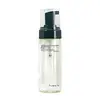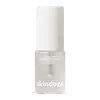What's inside
What's inside
 Key Ingredients
Key Ingredients

 Benefits
Benefits

 Concerns
Concerns

 Ingredients Side-by-side
Ingredients Side-by-side

Water
Skin ConditioningDipropylene Glycol
HumectantDisodium Laureth Sulfosuccinate
CleansingDisodium Cocoyl Glutamate
CleansingCoco-Glucoside
CleansingPolyglyceryl-10 Myristate
Skin ConditioningCamellia Japonica Flower Extract
EmollientCentella Asiatica Extract
CleansingSodium Hyaluronate
HumectantLonicera Japonica Flower Extract
Skin ConditioningMelaleuca Alternifolia Leaf Extract
PerfumingSalvia Officinalis Leaf Extract
CleansingCaprylic/Capric Triglyceride
MaskingCetyl Ethylhexanoate
EmollientEthylhexyl Palmitate
EmollientHydrolyzed Hyaluronic Acid
HumectantHydroxypropyltrimonium Hyaluronate
Sodium Hyaluronate Crosspolymer
HumectantSodium Acetylated Hyaluronate
HumectantMadecassoside
AntioxidantMadecassic Acid
Skin ConditioningAsiaticoside
AntioxidantAsiatic Acid
Skin ConditioningButylene Glycol
HumectantCitric Acid
BufferingCaprylyl Glycol
EmollientHydroxyacetophenone
AntioxidantPentylene Glycol
Skin ConditioningSalix Alba Bark Extract
AstringentPolyquaternium-67
Propanediol
SolventEthylhexylglycerin
Skin ConditioningDisodium EDTA
1,2-Hexanediol
Skin ConditioningWater, Dipropylene Glycol, Disodium Laureth Sulfosuccinate, Disodium Cocoyl Glutamate, Coco-Glucoside, Polyglyceryl-10 Myristate, Camellia Japonica Flower Extract, Centella Asiatica Extract, Sodium Hyaluronate, Lonicera Japonica Flower Extract, Melaleuca Alternifolia Leaf Extract, Salvia Officinalis Leaf Extract, Caprylic/Capric Triglyceride, Cetyl Ethylhexanoate, Ethylhexyl Palmitate, Hydrolyzed Hyaluronic Acid, Hydroxypropyltrimonium Hyaluronate, Sodium Hyaluronate Crosspolymer, Sodium Acetylated Hyaluronate, Madecassoside, Madecassic Acid, Asiaticoside, Asiatic Acid, Butylene Glycol, Citric Acid, Caprylyl Glycol, Hydroxyacetophenone, Pentylene Glycol, Salix Alba Bark Extract, Polyquaternium-67, Propanediol, Ethylhexylglycerin, Disodium EDTA, 1,2-Hexanediol
Water
Skin ConditioningGlycerin
HumectantSodium Cocoyl Glycinate
CleansingDisodium Cocoyl Glutamate
CleansingPropylene Glycol
HumectantBabassu Oil Glycereth-8 Esters
EmulsifyingNiacinamide
SmoothingSodium Chloride
MaskingSqualane
EmollientPhenoxyethanol
PreservativeCoconut Acid
CleansingSodium Cocoate
CleansingPanthenol
Skin ConditioningCitric Acid
BufferingAnthemis Nobilis Flower Extract
MaskingButylene Glycol
HumectantEthylhexylglycerin
Skin ConditioningSwiftlet Nest Extract
Skin ConditioningSodium PCA
HumectantTetrasodium Glutamate Diacetate
Pentylene Glycol
Skin ConditioningSodium Glycolate
BufferingCollagen
MoisturisingSodium Acetylated Hyaluronate
HumectantSodium Hyaluronate
HumectantSodium Hyaluronate Crosspolymer
HumectantHydrolyzed Sodium Hyaluronate
Skin ConditioningWater, Glycerin, Sodium Cocoyl Glycinate, Disodium Cocoyl Glutamate, Propylene Glycol, Babassu Oil Glycereth-8 Esters, Niacinamide, Sodium Chloride, Squalane, Phenoxyethanol, Coconut Acid, Sodium Cocoate, Panthenol, Citric Acid, Anthemis Nobilis Flower Extract, Butylene Glycol, Ethylhexylglycerin, Swiftlet Nest Extract, Sodium PCA, Tetrasodium Glutamate Diacetate, Pentylene Glycol, Sodium Glycolate, Collagen, Sodium Acetylated Hyaluronate, Sodium Hyaluronate, Sodium Hyaluronate Crosspolymer, Hydrolyzed Sodium Hyaluronate
 Reviews
Reviews

Ingredients Explained
These ingredients are found in both products.
Ingredients higher up in an ingredient list are typically present in a larger amount.
Butylene Glycol (or BG) is used within cosmetic products for a few different reasons:
Overall, Butylene Glycol is a safe and well-rounded ingredient that works well with other ingredients.
Though this ingredient works well with most skin types, some people with sensitive skin may experience a reaction such as allergic rashes, closed comedones, or itchiness.
Learn more about Butylene GlycolCitric Acid is an alpha hydroxy acid (AHA) naturally found in citrus fruits like oranges, lemons, and limes.
Like other AHAs, citric acid can exfoliate skin by breaking down the bonds that hold dead skin cells together. This helps reveal smoother and brighter skin underneath.
However, this exfoliating effect only happens at high concentrations (20%) which can be hard to find in cosmetic products.
Due to this, citric acid is usually included in small amounts as a pH adjuster. This helps keep products slightly more acidic and compatible with skin's natural pH.
In skincare formulas, citric acid can:
While it can provide some skin benefits, research shows lactic acid and glycolic acid are generally more effective and less irritating exfoliants.
Most citric acid used in skincare today is made by fermenting sugars (usually from molasses). This synthetic version is identical to the natural citrus form but easier to stabilize and use in formulations.
Read more about some other popular AHA's here:
Learn more about Citric AcidWe don't have a description for Disodium Cocoyl Glutamate yet.
Ethylhexylglycerin (we can't pronounce this either) is commonly used as a preservative and skin softener. It is derived from glyceryl.
You might see Ethylhexylglycerin often paired with other preservatives such as phenoxyethanol. Ethylhexylglycerin has been found to increase the effectiveness of these other preservatives.
Pentylene glycol is typically used within a product to thicken it. It also adds a smooth, soft, and moisturizing feel to the product. It is naturally found in plants such as sugar beets.
The hydrophilic trait of Pentylene Glycol makes it a humectant. As a humectant, Pentylene Glycol helps draw moisture from the air to your skin. This can help keep your skin hydrated.
This property also makes Pentylene Glycol a great texture enhancer. It can also help thicken or stabilize a product.
Pentylene Glycol also acts as a mild preservative and helps to keep a product microbe-free.
Some people may experience mild eye and skin irritation from Pentylene Glycol. We always recommend speaking with a professional about using this ingredient in your routine.
Pentylene Glycol has a low molecular weight and is part of the 1,2-glycol family.
Learn more about Pentylene GlycolSodium Acetylated Hyaluronate is a type of Hyaluronic Acid.
Hyaluronic Acids help moisturize, soothe, and protect the skin.
Read about common types of Hyaluronic Acid here:
Sodium Hyaluronate
Hydrolyzed Hyaluronic Acid
Hyaluronic Acid
Sodium Hyaluronate is hyaluronic acid's salt form. It is commonly derived from the sodium salt of hyaluronic acid.
Like hyaluronic acid, it is great at holding water and acts as a humectant. This makes it a great skin hydrating ingredient.
Sodium Hyaluronate is naturally occurring in our bodies and is mostly found in eye fluid and joints.
These are some other common types of Hyaluronic Acid:
Learn more about Sodium HyaluronateSodium Hyaluronate Crosspolymer is a type of hyaluronic acid. In fact, it is modified version of hyaluronic acid.
The structure of Sodium Hyaluronate Crosspolymer allows it to stay in the skin's top layer for a longer period of time. This allows for even more hydration and humectant action than hyaluronic acid.
These are some other common types of Hyaluronic Acid:
Learn more about Sodium Hyaluronate CrosspolymerWater. It's the most common cosmetic ingredient of all. You'll usually see it at the top of ingredient lists, meaning that it makes up the largest part of the product.
So why is it so popular? Water most often acts as a solvent - this means that it helps dissolve other ingredients into the formulation.
You'll also recognize water as that liquid we all need to stay alive. If you see this, drink a glass of water. Stay hydrated!
Learn more about Water